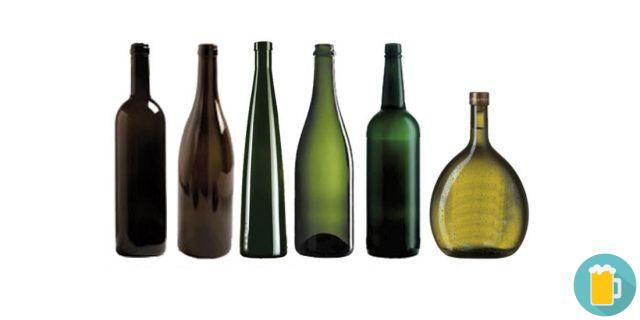Wine in the World
International Enography leads us to the discovery of the world wine regions, of the vines that are grown there, of the wines and of the rules to protect their quality.

Vine and wine in the world
Cultivation of the screw is made possible by the presence of weather conditions suitable, which have ensured that there are very specific areas in the world in which the viticulture it's possible. Unlike other fermented beverages (beer first of all), the delicacy of the raw material and the need to proceed with the transformation on the spot means that the countries in which these areas are located are also the major producers of wine. The range of latitude in which the vine can be cultivated varies from 30 to 50 ° north and by 30 to 40 ° south, with significant exclusions due to the various factors which, in terms of annual cyclical variations, are the ones that most influence vintages wineries.
World wine production
Italy Besides (first country with about 40 million hl), the major wine producing countries are (data in millions of hl, source OIV 2017): France (38), Spain (33), United States (21), Australia (14), Argentina (12), South-Africa (11), Chile (10), Germany (8), Portugal (7), New Zealand (3).
The wine market
It is obvious that the major producers are also important wine consuming countries. The combined effect of consumption habits and market size causes the United States are al first place with 32 million hl, followed by France, Italy, Germany, China, Britain etc. In terms of average per capita consumption per year, we take first place i French us 45 liters, then i Portuguese us 38, the Italian us 36, the Tedeschi us 23, the Americans us 10 and Chinese only with 1. The effect of the number of inhabitants on total consumption is evident: a change in consumption habits even on a small part of Chinese consumers would have important effects on the volumes exported by producing countries.
Wine culture
The culture of wine as we know it today was certainly born in France. It is also responsible for the worldwide diffusion of all the most important ones international grape varieties and the definition of avant-garde oenological practices then exported all over the world. This gap has been partially filled by the countries closest to it for culture and traditions, even if in terms of volumes of quality wine it remains considerable. L'Italy has come to surpass it in terms of volumes and number of designations of origin (408 DOP e 118 IGP against 360 PDO and 75 PGI) but remains detached in terms of production value. To follow for the old world the countries with the greatest wine traditions are the Spain and Portugal then followed by all the others who have areas included in the latitude range seen above.
Production climate and typicality
The peculiarity of European productions lies in their typicality, to be linked to the high number of autochthonous vine species, absent in the countries of the new world, where production focuses on international grape varieties, mostly of French origin. In these areas the personality of the wines is more linked to climatic factors and local production styles that not ai vines used, and this less anchoring with tradition results in a greater ability of the producers of the new world to adapt wines to the trends of world markets. Depending on the origin of the wines, in general we find that:
- Le regions a climate cooler (Central Europe especially, including some regions of France) are more suited for the production of sparkling e White wines generally characterized by freshness (acidity) is scents delicate;
- in temperate climate regions both white and red wines are produced with a fairly broad spectrum of organoleptic characteristics and highly variable with local winemaking styles;
- in countries a hot weather the wines produced, both white and red, are characterized by greater softness and body and their content alcoholas a consequence of the sugar content of musts, it tends to be higher.


























